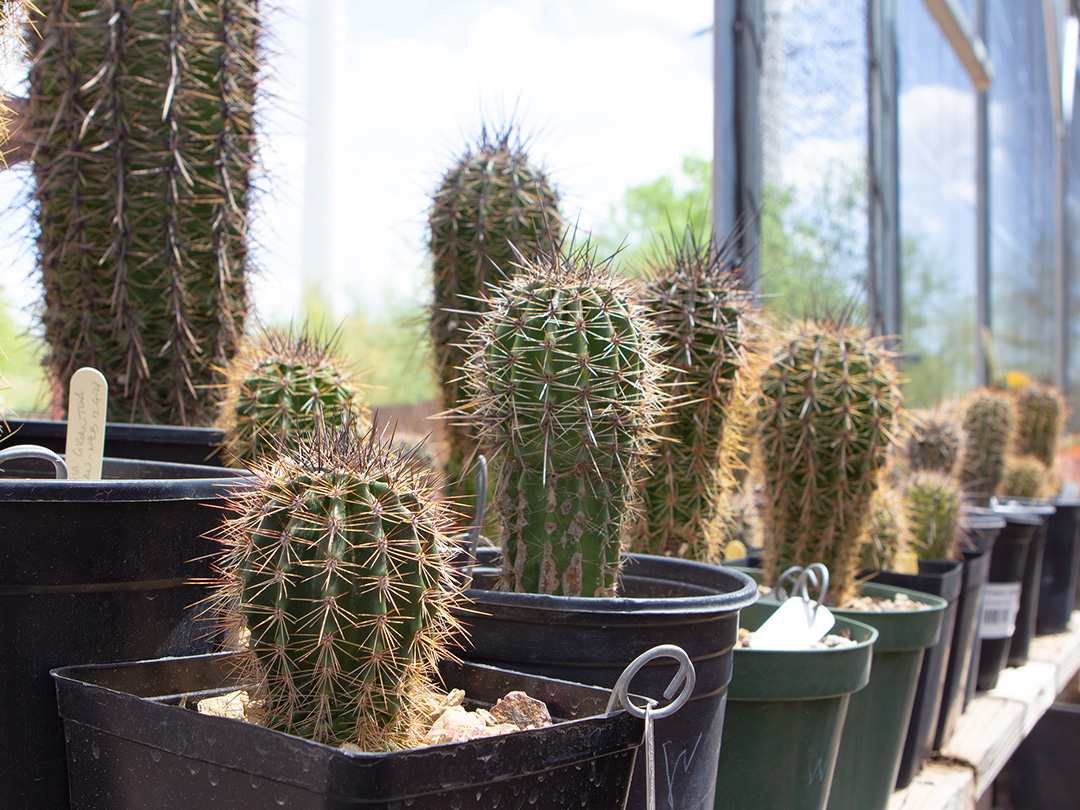Meet the next generation of saguaros.
In a small square pot, 100 black seeds are scattered across a sandy bed. Several of them have already sprouted into seedlings. The seedlings are only a few millimeters in size, resembling green jelly beans with a spiky head.
The seeds can germinate quickly, from one to three days, when soaked in water overnight prior to sowing. But it can take decades for them to reach maturity and produce flowers and fruits.
Garden scientists have propagated these seeds from a wild saguaro, that is known to be living in some of the harshest conditions in Arizona and thriving, as part of a nascent conservation effort at the Garden to add genetic diversity to the Garden’s saguaro population. Genetic diversity is key for a population to better adapt to changing environmental conditions.
This project is in its very early stages. The plan is to collect more wild saguaro seeds to add to the Garden’s seed lab and study which populations are better adapted to harsher conditions.

In 2020, researchers and horticulture staff began collecting seeds from wild saguaro populations. The seeds are collected from saguaro fruits and are stored in large stainless-steel freezers in the Garden’s Ahearn Desert Conservation Laboratory.
The goal is to propagate seeds from wild saguaros that might be better suited to withstand harsher conditions.

In addition, the Garden has two projects focused on saguaros that work in tandem: Saguaro Census and Saguaros Under Stress. The first project is a community science endeavor to record and observe the health of saguaros growing in metro Phoenix. The Garden’s Saguaro Census helps researchers understand the Valley’s saguaro demographics, including plants that have been damaged, height, location and other observations. Saguaros Under Stress project aims to understand how heat stress is affecting urban saguaros at the molecular level. With the help from homeowners who volunteer their saguaros, Garden scientists have collected small samples of stem tissues. Both of these projects are ongoing.
Garden scientists are using molecular techniques on urban saguaros to track them back to their origins (original locality). Most saguaros in metro Phoenix were planted from nurseries or brought in from somewhere else. If scientists can identify what plants are able to survive and thrive in a heat island, it might help uncover what plants they need to focus on for future planting efforts in the city, as well as what populations of plant may be able to survive in the wild.
For more details about the Saguaro Census and how you can get involved visit dbg.org/events/the-metro-phoenix-saguaro-census-2023/ or email [email protected].
